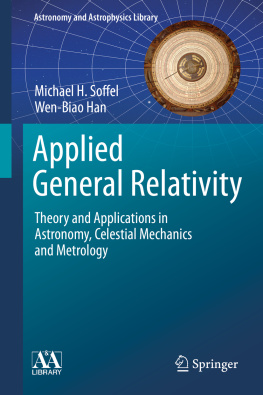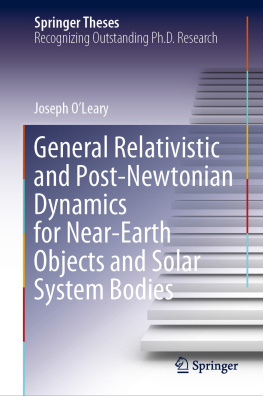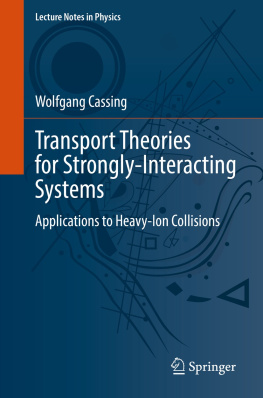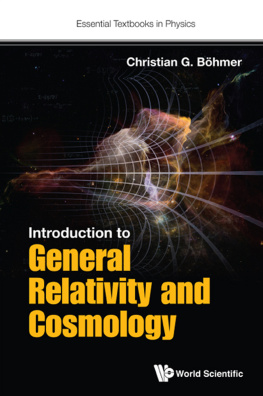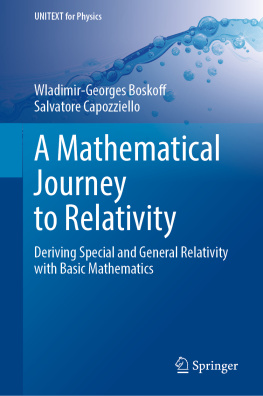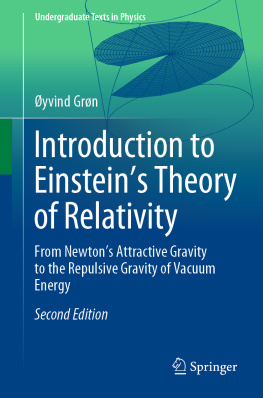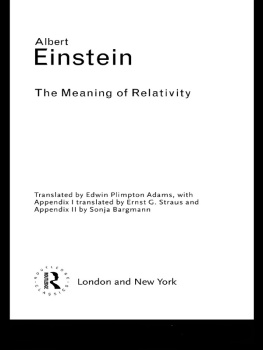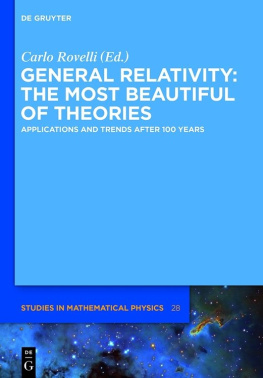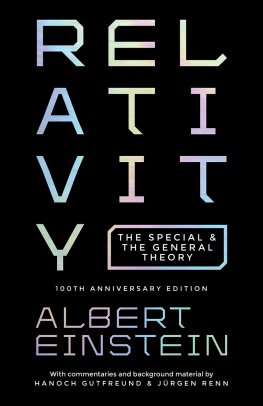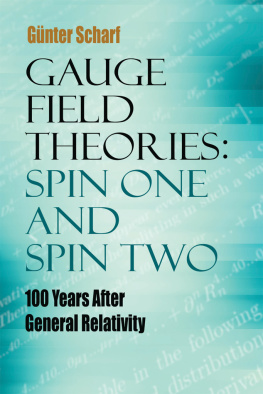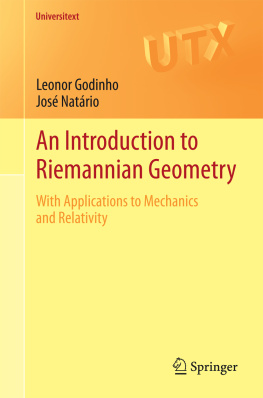Michael H. Soffel
Institute of planetary geodesy, Lohrmann-Observatory, Dresden, Germany
Wen-Biao Han
Shanghai Astronomical Observatory, Chinese Academy of Sciences, Shanghai, China
ISSN 0941-7834 e-ISSN 2196-9698
Astronomy and Astrophysics Library
ISBN 978-3-030-19672-1 e-ISBN 978-3-030-19673-8
https://doi.org/10.1007/978-3-030-19673-8
Cover Illustration: 'Space-Time curvature' (2019) by M. Soffel and W.-B. Han with the St. Marien (Rostock) astronomical clock overlaid (photograph by M.L. Preis).
Springer Nature Switzerland AG 2019
This work is subject to copyright. All rights are reserved by the Publisher, whether the whole or part of the material is concerned, specifically the rights of translation, reprinting, reuse of illustrations, recitation, broadcasting, reproduction on microfilms or in any other physical way, and transmission or information storage and retrieval, electronic adaptation, computer software, or by similar or dissimilar methodology now known or hereafter developed.
The use of general descriptive names, registered names, trademarks, service marks, etc. in this publication does not imply, even in the absence of a specific statement, that such names are exempt from the relevant protective laws and regulations and therefore free for general use.
The publisher, the authors and the editors are safe to assume that the advice and information in this book are believed to be true and accurate at the date of publication. Neither the publisher nor the authors or the editors give a warranty, express or implied, with respect to the material contained herein or for any errors or omissions that may have been made. The publisher remains neutral with regard to jurisdictional claims in published maps and institutional affiliations.
Cover illustration: Space-Time curvature (2019) by M. Soffel and W.-B. Han with the St. Marien (Rostock) astronomical clock overlaid (photograph by M.L. Preis).
This Springer imprint is published by the registered company Springer Nature Switzerland AG.
The registered company address is: Gewerbestrasse 11, 6330 Cham, Switzerland
Preface
At present, there is a vast number of textbooks on Einsteins theory of gravity (general relativity, GR) that are available for different kinds of readers and at different levels of technical complexity. There is a series of classical treatments, e.g., Eddington (1922), Tolman (1934), Bergmann (1942), Weyl (1950), Pauli (1958), Fock (1959), Synge (1960), Adler et al. (1965), Fokker (1965), Rindler (1969), Carmeli et al. (1970), Landau and Lifshitz (1971), Weinberg (1972), Mller (1972), Misner et al. (1973), and Hawking and Ellis (1973), but also many more modern books, like Geroch (1978), Wald (1984), Schutz (1985), Woodhouse (2007) or Carroll (2013) to name just a few. In addition, there are the Living Reviews in Relativity , such as e.g. Will (2006) or Blanchet (2014), that can be downloaded from the web for free.
Many books deal with tests of GR; the standard reference is Will (1993, 2006), but only a few deal with specific applications, e.g. in the important field of metrology. In the field of Applied General Relativity it is essentially the books by Soffel (1989) and Kopeikin et al. (2011) where the reader can learn how general relativistic effects enter such fields as the realization of time scales, practical clock synchronization, satellite- and lunar laser ranging or very long baseline interferometry. Now, the first of these books is completely obsolete, whereas the second one is not really a textbook, written in a homogenous style where the reader should be able to understand the arguments step-by-step.
In some sense, this book presents an improvement, extension and actualization of my old Springer book (Soffel 1989). This is especially true with respect to the selection of subjects treated in this book: the main emphasis lies on relativity in astrometry, celestial mechanics and metrology, thus on certain aspects of applied science. We have borrowed heavily from that book; some parts that we think are still up to date were taken almost literally (we have also borrowed several parts from Soffel and Langhans 2013). This book is clearly not a textbook on all aspects of Einsteins theory of gravity (general relativity, GR). Though some aspects related with exact solutions of the Einstein field equations are treated, the physics of objects with strong gravitational fields, like black holes, neutron stars or white dwarfs or gravitational waves, will not be discussed here.
In another sense, this is a completely new book. After Soffel (1989) came out, both, the theoretical relativistic formalisms and the observational techniques, have drastically been improved so that large parts of Soffel (1989) became obsolete. A good example for theoretical improvements is the Brumberg-Kopeikin Damour-Soffel-Xu (BK-DSX) formalism for relativistic celestial mechanics. For the first time in history, a new formalism for treating the relativistic celestial mechanics of systems of N arbitrarily composed and shaped, weakly self-gravitating, rotating, deformable bodies was introduced. This formalism is aimed at yielding a complete description, at the first post-Newtonian approximation level, of (1) the global dynamics of such N -body systems (external problem), (2) the local gravitational structure of each body (internal problem), and (3) the way the external and the internal problems fit together (theory of reference systems) (Damour et al. 1991; DSX-I). This BK-DSX formalism is based on the first post-Newtonian approximation of Einsteins theory of gravity, and an extension to higher orders will be difficult. Nevertheless, it is sufficient for many applications at the present level of accuracies.
The multipolar post-Minkowskian (MPM) formalism that has been worked out by Blanchet, Damour and Iyer (see Blanchet 2014 for an overview) is another example for that. Though important papers on that subject date back to the second half of the 1980s, it has only been in recent years that the MPM formalism has been worked out completely. The MPM formalism is able to describe the gravitational field of weak-field sources inside of some compact region basically to all orders of

